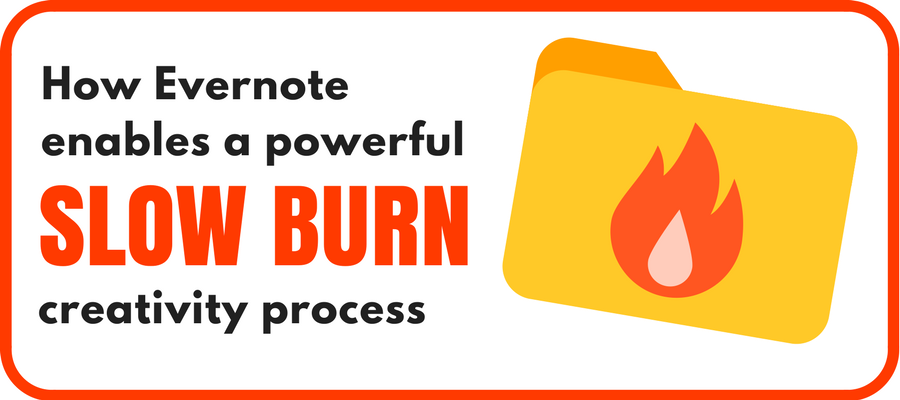Evernote supports a valuable alternative to the popular but often unproductive “quick hit” approach to brainstorming that is the standard operating procedure at organizations large and small.
Most corporate brainstorming today consists of a team dedicating a limited amount of time to brainstorming ideas to solve a business challenge. Once a list of ideas has been generated, the team picks what appears to be the best one to implement. Everybody feels happy that the problem has apparently been solved, and goes back to their day-to-day work.
 “Too often, we force ourselves to take an idea from blue sky ideation to practical execution in 48 hours flat. We call it a ‘rapid prototyping sprint,’ and pride ourselves on how little time was spent, as if a new idea is something to be excreted and moved on from as quickly as possible,” explains Tiago Forte, a trainer and innovator who has studied creative work and the tools that can be employed to support it.
“Too often, we force ourselves to take an idea from blue sky ideation to practical execution in 48 hours flat. We call it a ‘rapid prototyping sprint,’ and pride ourselves on how little time was spent, as if a new idea is something to be excreted and moved on from as quickly as possible,” explains Tiago Forte, a trainer and innovator who has studied creative work and the tools that can be employed to support it.
“But this is not how our mind works,” he adds. Typically, when we walk away from a problem or challenge, our subconscious mind contains to process it, making random combinations and interpretations based on the “raw materials” you’ve fed it about your challenge. Why not leverage that by taking longer to discern creative solutions?
Forte is a fan of the “slow burn” approach to creativity, which is often more fruitful than the “run and gun” style of brainstorming Rather than try to solve a problem quickly, you gather information and to find the problem as accurately as you can. You then look for additional bits of information and inspiration, and add them to your cache of knowledge. Each time you do so, you look for connections and synergies between the bits and pieces you have gathered. Eventually, this leads to deep insights and solutions that you couldn’t have come up with any other way.
 The best known practitioner of this counterintuitive approach is Richard Feynman, Nobel prize winning physicist and brilliant problem solver. Here’s how he approached large, complex problems using this “slow burn” approach:
The best known practitioner of this counterintuitive approach is Richard Feynman, Nobel prize winning physicist and brilliant problem solver. Here’s how he approached large, complex problems using this “slow burn” approach:
“You have to keep a dozen of your favorite problems constantly present in your mind, although by and large they will lay in a dormant state. Every time you hear or read a new trick or a new result, test it against each of your twelve problems to see whether it helps. Every once in a while there will be a hit, and people will say: ‘How did he do it? He must be a genius!'”
Forte believes that Evernote is the perfect tool for this alternate approach to creativity:
“Evernote provides much of the infrastructure for making the slow burn possible. It is durable, universal, centralized, and persistent, increasing the chance that your ‘dozen favorite problems’ repeatedly see the light of day.”
Here’s how it works:
- Set up notebooks for each of the key challenges or problems you’re trying to solve.
- Add relevant bits and pieces on information to your problem notebooks as you come across them. Fortunately. the format in which you encounter these items in is almost irrelevant, because Evernote is agnostic when it comes to the types and formats of data and information you can capture in a note.
- Each time you add new resources to a folder, ask yourself, “How does this fit with the other information I have stored here? What insights does it suggest in the context of the other notes and information it contains?”
As you can see from the diagram above, input during the “slow burn” can take many forms – from Google Alerts and relevant articles to insights from a colleague and freewriting exercises in Evernote. The key is to use each folder as a repository, which appreciates in value as you add more information to it.
What are your 12 favorite problems? Why not list them in Evernote using this technique, and see the amazing places your thinking takes you!


